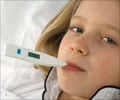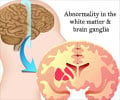It is more difficult to recognize and treat epilepsy in old than in young patients.
It is more difficult to recognize and treat epilepsy in old than in young patients. In the new edition of Deutsches Ärzteblatt International (Dtsch Arztebl Int, Konrad J. Werhahn of the Epilepsy Center of Johannes Gutenberg University in Mainz, Germany, presents the clinical characteristics of the disease and the therapeutic options.
It is often not possible to recognize epileptic seizures unambiguously in older patients; they may be identified as confusion of unclear etiology, memory disturbance, or giddiness. Aura is a typical symptom in young patients, but is rare in old patients.Moreover, confusion after a seizure may last much longer in older patients with epilepsy, giving the impression of dementia or stroke. Drug treatment of old patients with epilepsy is complicated. There has not yet been enough research on changes in drug distribution and decreased elimination through the liver and kidneys in epilepsy in the elderly. For this reason, many therapeutic decisions are based on experience with young epileptics, together with the knowledge of the general principles of pharmacotherapy in age.
As old patients often require different drugs for a variety of diseases, drug interactions may occur. Moreover, older patients react more sensitively to drug side effects.
The author discusses conventional antiepileptics, together with their side effects and interactions. Nevertheless, many questions cannot be answered with the current state of knowledge and the available studies.
Source-Eurekalert
SRM















